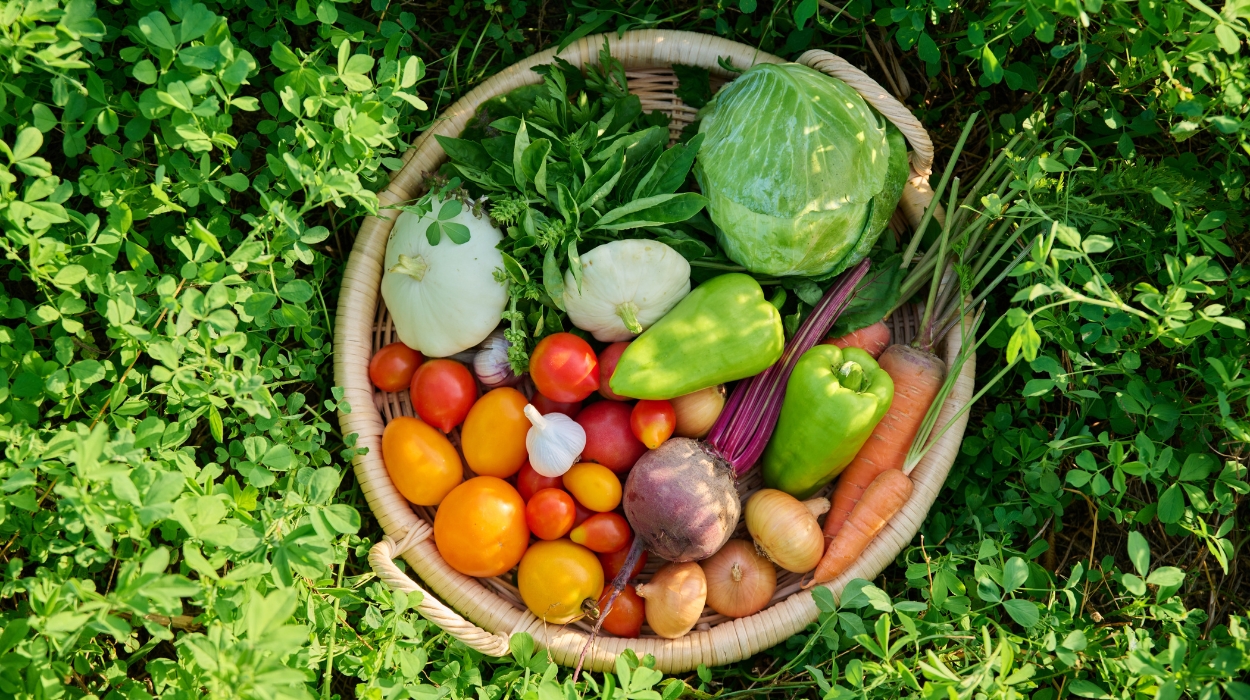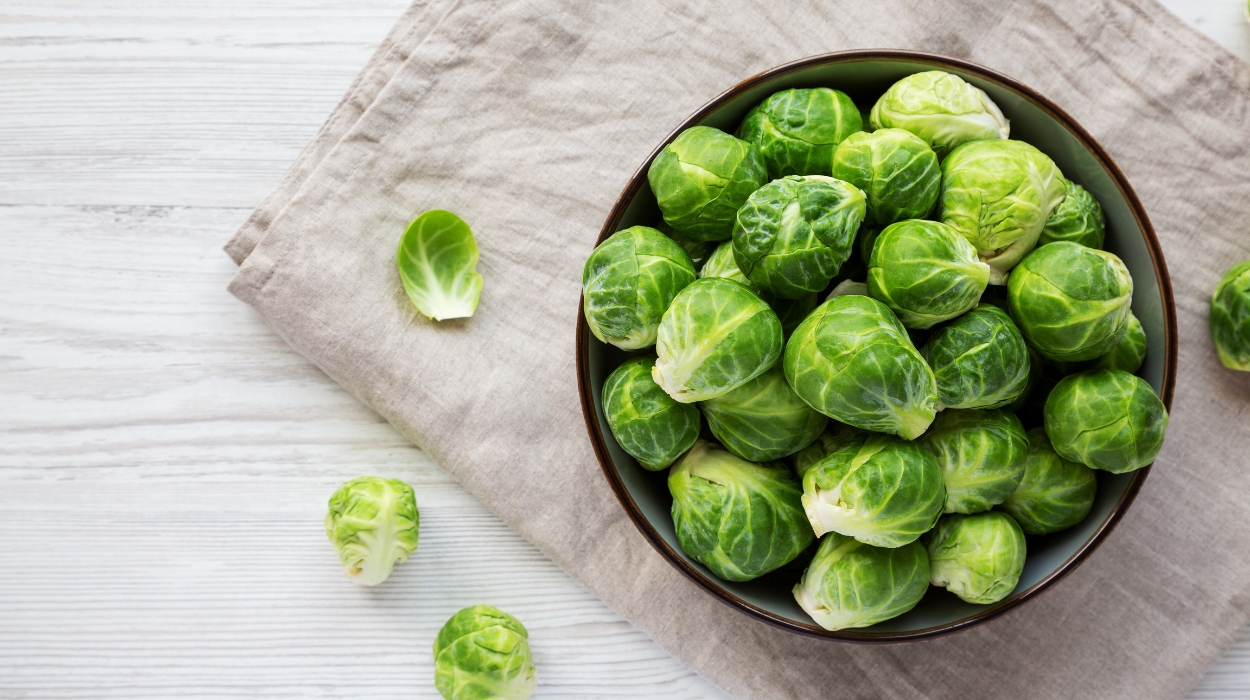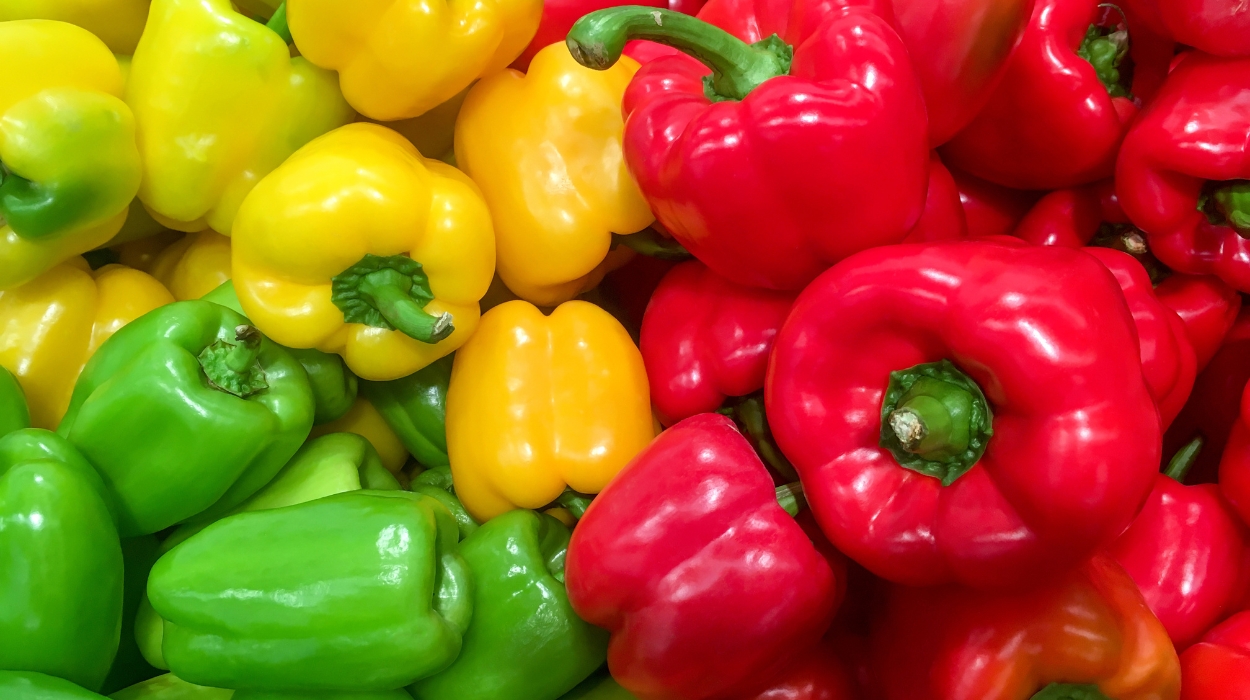 Expert's opinion
Expert's opinion
Expert's opinion
The article is a subjective view on this topic written by writers specializing in medical writing.
It may reflect on a personal journey surrounding struggles with an illness or medical condition, involve product comparisons, diet considerations, or other health-related opinions.
Although the view is entirely that of the writer, it is based on academic experiences and scientific research they have conducted; it is fact-checked by a team of degreed medical experts, and validated by sources attached to the article.
The numbers in parenthesis (1,2,3) will take you to clickable links to related scientific papers.
8 Best Vegetables For Weight Loss To Include In Your Diet 2024

Are you looking for ways to lose weight and achieve your weight-loss goals? One way is by changing what you eat. This means eating better, and this is best attained by adding more healthy vegetables to your weight-loss diet.
Vegetables are delicious and have few calories. So, what are the best vegetables for weight loss? In this article are 8 of the healthiest vegetables for weight loss. These are easy to find, prepare, and eat daily to promote weight loss.
8 Healthiest Vegetables For Weight Loss
The best vegetables for weight loss are naturally low-calorie and packed with essential nutrients. Here are the eight best vegetables you should eat to lose weight.
- Spaghetti squash
- Brussels sprouts
- Raw kale
- Raw spinach
- Bell peppers
- Zucchini
- Snow peas
- Chili peppers
8 Best Vegetables For Weight Loss
Spaghetti Squash
Are you looking for foods full of essential nutrients[1] and few calories? Spaghetti squash is a must when you want to lose weight. And it brings you that amazing nutty flavor that goes well with numerous dishes.
Spaghetti squash is not only nutritious, but it has health benefits worth noting. For instance, since there are only 42 calories per 100 grams (g), it works well with a low-calorie diet while at the same time, the high fiber content aids in healthy digestion. If you have issues such as irregularity and constipation, eating spaghetti squash[2] is good to add bulk to your stool.
Low-calorie foods like spaghetti squash are good to pair with other healthy vegetables. In fact, you can replace pasta with spaghetti squash for a more nutritious meal. It’s such an easy dish to prepare since you must roast it in the oven.
A spaghetti squash meal is what you need to have to benefit from vitamins B6 and C. Also, it’s rich in calcium, manganese, and fiber. This is a great source of antioxidants that protect your body from free radicals,[3] which play a nefarious role in heart disease.
Brussels Sprouts

Did you know Brussels sprouts are among the best vegetables for weight loss? The best way to help with weight loss is to ensure you eat healthily. That entails adding lots of nutritious vegetables to your balanced meal and a calorie-deficit eating strategy.
Fortunately, Brussels sprouts are low-calorie vegetables that are high in fiber. These members of the Brassicaceae family look like small cabbages and are full of vital nutrients.[4] 100 g of these cruciferous vegetables is 28 calories and contains high amounts of folate, vitamin C, and vitamin K.
The health benefits of these essential nutrients include support for blood clotting[5] (vitamin K) cascade and tissue repair[6] (vitamin C). They also contain only 5.5 g of carbohydrates (carbs), so these are perfect for a low-carb diet.
You can prepare cooked Brussels sprouts at home in different ways, including baking, sautéing, roasting, and boiling. Add them to your main dish, and you can count that as eating veggies.
Weight loss entails burning stored fat in your body. By eating low-calorie veggies like Brussels sprouts, you won’t have to worry about more body fat accumulation.
Raw Kale
Raw kale falls into the category of leafy greens that you can enjoy as you work on eating your veggies. Kale is a source of numerous vitamins and minerals[7] that the body requires for good overall health. It helps that 100 g of kale only has 33 calories which works well with a low-calorie diet.
So, eat more kale when you are on a healthy weight loss journey. Losing weight requires discouraging fat storage, so the body gets leaner daily. You also enjoy vitamins A, B6, C, and K when eating raw kale. This cruciferous vegetable also contains manganese, calcium, magnesium, potassium, and copper.
Apart from achieving your goal of losing weight, raw kale also has other health benefits. These include powerful antioxidants[8] such as kaempferol[9] and quercetin.[10] Antioxidants protect the body from free radicals that cause extensive damage.
Raw kale is also an excellent source of vitamin C, which the body needs for better immune function.[11]
Raw Spinach
Have you started eating veggies to lose weight and want more options? Try raw spinach. Just like raw kale, spinach is a nutritious leafy green that ranks among the best vegetables for losing weight. And it is great to have if you suffer from low vitamin intake.
Raw spinach is packed full of rich nutrients[12] that support better body function. You can also say these are the best green vegetables for weight loss. 100 g of raw spinach contains 23 calories, 3.6 g carbs, and 2.2 g fiber. Eat more raw spinach if you want to add more fiber but fewer carbs to your meals.
Weight loss entails eating fewer calories, so vegetables like raw spinach are a great option. A good weight-loss diet will see you get healthier, and spinach eaten raw helps your body in many ways. For instance, this is a good green vegetable to have if you want to relieve oxidative stress.[13]
This delicious vegetable also helps lower high blood pressure.[14] Raw spinach is good to eat in salads, or you can add it to any green smoothie. The high fiber content will also ensure regular bowel movements.
Bell Peppers

Bell peppers are excellent vegetables if you want to enjoy eating fewer calories. These are among the healthiest vegetables for weight loss and can be eaten cooked or enjoyed raw. Some people even opt to dry bell peppers and grind them into flour you can use in recipes.
If you want to lose weight, it’s crucial to eat fewer calories. When you eat more calories, you contribute to the fat storage in your body. Thankfully, bell peppers are a good option for a low-calorie diet since 100 g only contains 31 calories. Bell peppers are also perfect for a low-carb diet since there are only 6 g of carbs per cup.
Regarding nutritional content,[12] this is where the health benefits shine. These vegetables are rich in vitamins A, B6, C, E, K, and folate. There are also minerals like potassium. Bell peppers are rich in antioxidants, depending on which color[15] you choose to eat.
Enjoy delicious bell pepper if you have anemia or fatigue. This is because these vegetables are a rich source of vitamin C, which enhances iron absorption.[16]
Zucchini
Are you not a fan of spaghetti squash? If you want to enjoy more fiber, you can keep eating veggies such as zucchini. Though zucchinis are botanically fruits, people still consider them their favorite vegetables and eat them raw or cooked.
Zucchinis are nutritious and low in calories, which is perfect for your weight loss goals. A 100 g cup of raw zucchini only contains 12 calories, so consider them when you want to lose weight. These are among the best vegetables to eat for healthy weight loss.
The nutrient content of zucchini includes vitamins and minerals[12]. There are vitamins A, C, K, B1, B6, and folate. Minerals include phosphorus, magnesium, copper, potassium, iron, and manganese. Zucchinis are also rich in antioxidants[17] that protect the body from damaging free radicals.
You can enjoy many health benefits by eating zucchini, including body weight loss. At the top of the list are good digestion[18] and a healthy gut. Zucchini has a high water content for softening stools, making it easier to pass.
As you lose weight, zucchini can also come in handy when it comes to regulating blood sugar levels. This is a good addition to a low-carb diet, ideal for folks with type 2 diabetes. Keeping the blood sugar levels[19] stable may reduce your need for medication. But, always consult with a physician or registered dietitian before changing medication intake.
Snow Peas
Vegetables are best for weight loss since they are low-calorie. Eating fewer calories is the best way to ensure your weight loss is healthy. And as you enjoy eating more vegetables, don’t forget to add snow peas to your healthy diet.
Snow peas have been around for centuries and are a favorite green vegetable for many. They fit well in a healthy diet when you want to achieve safe weight loss. A cup of snow peas contains only 42 calories and 7.5 g of carbs.
These green vegetables offer healthy nutrients you need for proper body function. There are vitamins A, C, K, and folate, and minerals such as manganese, magnesium, potassium, and phosphorus.
Chili Peppers
Lastly, chili peppers are another example of healthy vegetables[20] for weight loss. They have that hot flavor that pairs well with different dishes. There are numerous health benefits to eating chili peppers.
Did you know there are only 6 calories per 100 g of chilli peppers? While you might not eat an entire cup, adding them to low-calorie dishes makes them flavorful. Chilli peppers are also a rich source of essential nutrients.[21]
In fact, these are a great source of vitamins A, C, B6, and K1. The body also will garner the benefits of copper and potassium.
As you work to lose weight, eating chili peppers is beneficial since they aid in suppressing your appetite. These great vegetables also speed up the fat-burning process[22] and can help you reduce calorie intake.
Reasons You Should Eat Vegetables For Weight Loss
Do you want to lose weight and achieve your body goals? Well, you should ensure you have more vegetable intake. Below are some of the reasons you should eat vegetables for long-term weight loss:
Better Health
Being overweight or obese comes with health challenges. This causes your body to suffer aches and pains that can diminish productivity but, it can add risks of life-threatening illnesses like diabetes or heart disease.
Easy To Prepare
Do you want to eat more vegetables for weight loss? Well, the good news is these are easy to prepare. Most vegetables are easy to enjoy raw, baked, roasted, or stir-fried.
Lots Of Nutrients
Vegetables are a powerhouse when it comes to essential nutrients. Basically, you can enjoy numerous vitamins and minerals[23] when you eat even a single vegetable serving.
The Takeaway
Vegetables are the best to eat when you want to lose weight. This article finds 8 of the best vegetables for weight loss in this article. These are perfect for eating when you want to have fewer calories. They also ensure you benefit from loads of essential nutrients crucial for better body function.
+ 23 sources
Health Canal avoids using tertiary references. We have strict sourcing guidelines and rely on peer-reviewed studies, academic researches from medical associations and institutions. To ensure the accuracy of articles in Health Canal, you can read more about the editorial process here
- Usda.gov. (2022). FoodData Central. [online] Available at: https://fdc.nal.usda.gov/fdc-app.html#/food-details/169299/nutrients
- Akbar, A. and Shreenath, A.P. (2022). High Fiber Diet. [online] Nih.gov. Available at: https://www.ncbi.nlm.nih.gov/books/NBK559033/
- Aune, D., Keum, N., Giovannucci, E., Fadnes, L.T., Boffetta, P., Greenwood, D.C., Tonstad, S., Vatten, L.J., Riboli, E. and Norat, T. (2018). Dietary intake and blood concentrations of antioxidants and the risk of cardiovascular disease, total cancer, and all-cause mortality: a systematic review and dose-response meta-analysis of prospective studies. The American Journal of Clinical Nutrition, [online] 108(5), pp.1069–1091. doi:10.1093/ajcn/nqy097.
- Usda.gov. (2022). FoodData Central. [online] Available at: https://fdc.nal.usda.gov/fdc-app.html#/food-details/169971/nutrients
- Nih.gov. (2012). Office of Dietary Supplements – Vitamin K. [online] Available at: https://ods.od.nih.gov/factsheets/VitaminK-HealthProfessional/
- Nih.gov. (2020). Office of Dietary Supplements – Vitamin C. [online] Available at: https://ods.od.nih.gov/factsheets/VitaminC-HealthProfessional/
- Usda.gov. (2022). FoodData Central. [online] Available at: https://fdc.nal.usda.gov/fdc-app.html#/food-details/168421/nutrients
- Rahal, A., Kumar, A., Singh, V., Yadav, B., Tiwari, R., Chakraborty, S. and Dhama, K. (2014). Oxidative Stress, Prooxidants, and Antioxidants: The Interplay. BioMed Research International, [online] 2014, pp.1–19. doi:10.1155/2014/761264.
- PubChem (2022). Kaempferol. [online] @pubchem. Available at: https://pubchem.ncbi.nlm.nih.gov/compound/Kaempferol
- Lam, T.K., Rotunno, M., Lubin, J.H., Wacholder, S., Consonni, D., Pesatori, A.C., Bertazzi, P.A., Chanock, S.J., Burdette, L., Goldstein, A.M., Tucker, M.A., Caporaso, N.E., Subar, A.F. and Landi, M.T. (2009). Dietary quercetin, quercetin-gene interaction, metabolic gene expression in lung tissue and lung cancer risk. Carcinogenesis, [online] 31(4), pp.634–642. doi:10.1093/carcin/bgp334.
- Carr, A. and Maggini, S. (2017). Vitamin C and Immune Function. Nutrients, [online] 9(11), p.1211. doi:10.3390/nu9111211.
- Usda.gov. (2019). [online] Available at: https://ndb.nal.usda.gov/ndb/search.
- Betteridge, D.J. (2000). What is oxidative stress? Metabolism, [online] 49(2), pp.3–8. doi:10.1016/s0026-0495(00)80077-3.
- Jovanovski, E., Bosco, L., Khan, K., Au-Yeung, F., Ho, H., Zurbau, A., Jenkins, A.L. and Vuksan, V. (2015). Effect of Spinach, a High Dietary Nitrate Source, on Arterial Stiffness and Related Hemodynamic Measures: A Randomized, Controlled Trial in Healthy Adults. Clinical Nutrition Research, [online] 4(3), p.160. doi:10.7762/cnr.2015.4.3.160.
- Sun, T., Xu, Z., Wu, C.-T. ., Janes, M., Prinyawiwatkul, W. and No, H.K. (2007). Antioxidant Activities of Different Colored Sweet Bell Peppers (Capsicum annuum L.). Journal of Food Science, [online] 72(2), pp.S98–S102. doi:10.1111/j.1750-3841.2006.00245.x.
- Péneau, S., Dauchet, L., Vergnaud, A.-C., Estaquio, C., Kesse-Guyot, E., Bertrais, S., Latino-Martel, P., Hercberg, S. and Galan, P. (2008). Relationship between iron status and dietary fruit and vegetables based on their vitamin C and fiber content. The American Journal of Clinical Nutrition, [online] 87(5), pp.1298–1305. doi:10.1093/ajcn/87.5.1298.
- Blanco-Díaz, M.T., Del Río-Celestino, M., Martínez-Valdivieso, D. and Font, R. (2014). Use of visible and near-infrared spectroscopy for predicting antioxidant compounds in summer squash (Cucurbita pepo ssp pepo). Food Chemistry, [online] 164, pp.301–308. doi:10.1016/j.foodchem.2014.05.019.
- and, D. (2022). Eating, Diet, & Nutrition for Constipation. [online] National Institute of Diabetes and Digestive and Kidney Diseases. Available at: https://www.niddk.nih.gov/health-information/digestive-diseases/constipation/eating-diet-nutrition
- Meng, Y., Bai, H., Wang, S., Li, Z., Wang, Q. and Chen, L. (2017). Efficacy of low carbohydrate diet for type 2 diabetes mellitus management: A systematic review and meta-analysis of randomized controlled trials. Diabetes Research and Clinical Practice, [online] 131, pp.124–131. doi:10.1016/j.diabres.2017.07.006.
- Sanati, S., Razavi, B.M. and Hosseinzadeh, H. (2018). A review of the effects of Capsicum annuum L. and its constituent, capsaicin, in metabolic syndrome. Iranian journal of basic medical sciences, [online] 21(5), pp.439–448. doi:10.22038/IJBMS.2018.25200.6238.
- Usda.gov. (2019). [online] Available at: https://ndb.nal.usda.gov/ndb/foods
- Whiting, S., Derbyshire, E.J. and Tiwari, B. (2014). Could capsaicinoids help to support weight management? A systematic review and meta-analysis of energy intake data. Appetite, [online] 73, pp.183–188. doi:10.1016/j.appet.2013.11.005.
- Slavin, J.L. and Lloyd, B. (2012). Health Benefits of Fruits and Vegetables. Advances in Nutrition, [online] 3(4), pp.506–516. doi:10.3945/an.112.002154.



